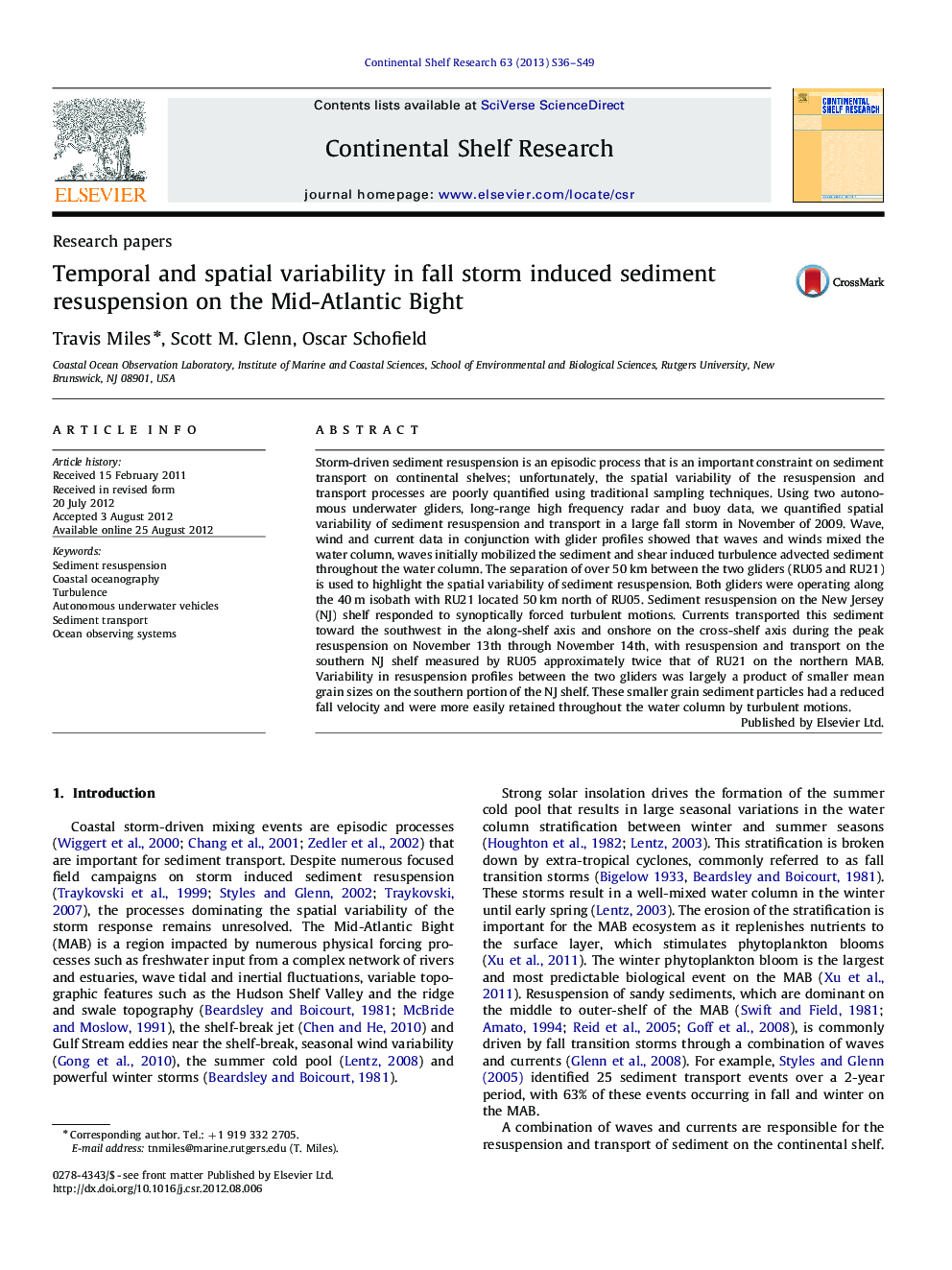| Article ID | Journal | Published Year | Pages | File Type |
|---|---|---|---|---|
| 4532080 | Continental Shelf Research | 2013 | 14 Pages |
Storm-driven sediment resuspension is an episodic process that is an important constraint on sediment transport on continental shelves; unfortunately, the spatial variability of the resuspension and transport processes are poorly quantified using traditional sampling techniques. Using two autonomous underwater gliders, long-range high frequency radar and buoy data, we quantified spatial variability of sediment resuspension and transport in a large fall storm in November of 2009. Wave, wind and current data in conjunction with glider profiles showed that waves and winds mixed the water column, waves initially mobilized the sediment and shear induced turbulence advected sediment throughout the water column. The separation of over 50 km between the two gliders (RU05 and RU21) is used to highlight the spatial variability of sediment resuspension. Both gliders were operating along the 40 m isobath with RU21 located 50 km north of RU05. Sediment resuspension on the New Jersey (NJ) shelf responded to synoptically forced turbulent motions. Currents transported this sediment toward the southwest in the along-shelf axis and onshore on the cross-shelf axis during the peak resuspension on November 13th through November 14th, with resuspension and transport on the southern NJ shelf measured by RU05 approximately twice that of RU21 on the northern MAB. Variability in resuspension profiles between the two gliders was largely a product of smaller mean grain sizes on the southern portion of the NJ shelf. These smaller grain sediment particles had a reduced fall velocity and were more easily retained throughout the water column by turbulent motions.
► Demonstrate spatial variability of sediment resuspension using glider AUVs. ► Local grain-size variability plays an important role in total shelf scale transport. ► Turbulence drives water-column resuspension after wave mobilization of the bed. ► Transport in the along-shelf direction is toward the southwest. ► Transport in the cross-shelf direction is variable spatially and temporally.
